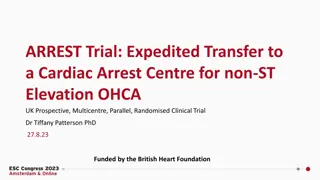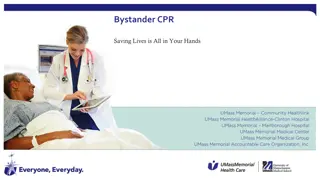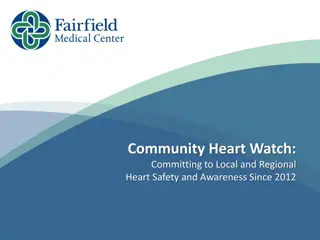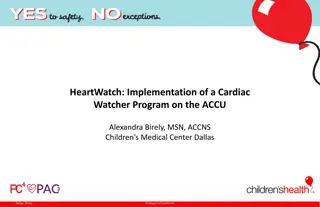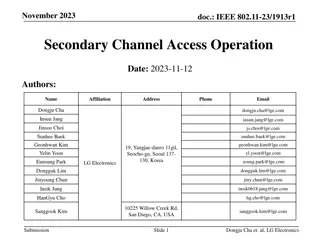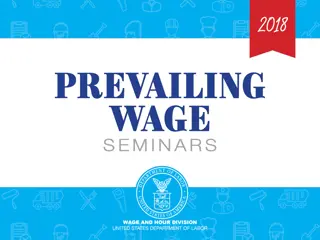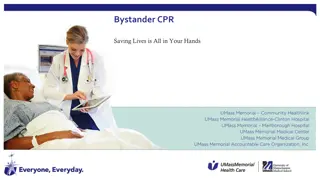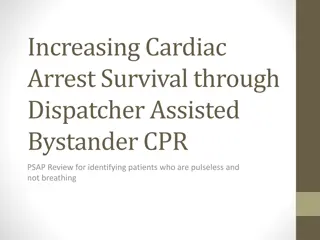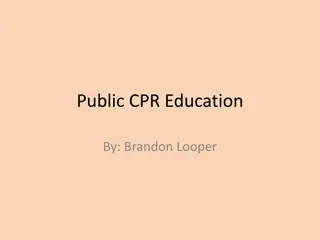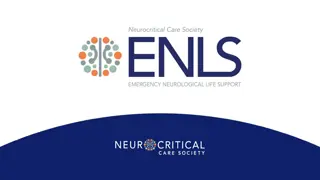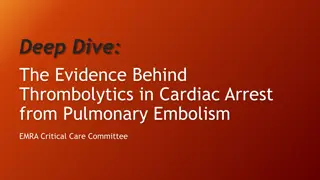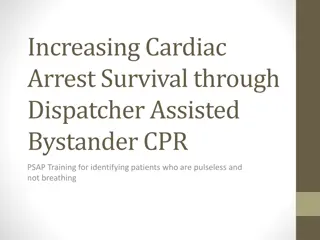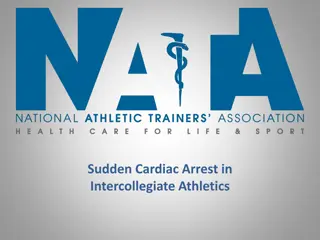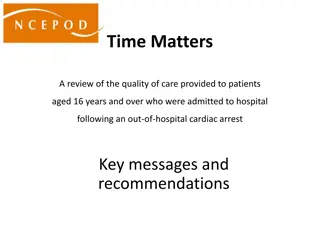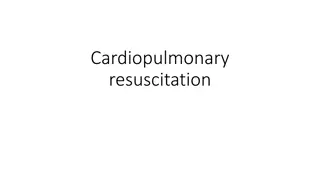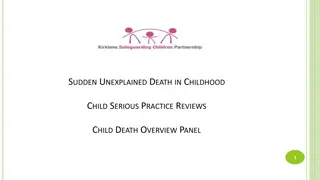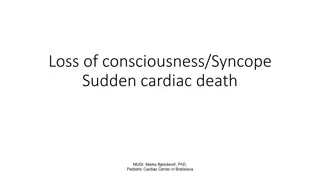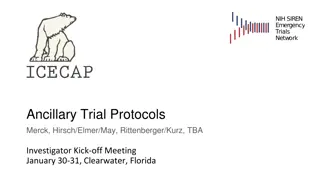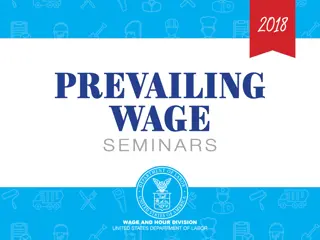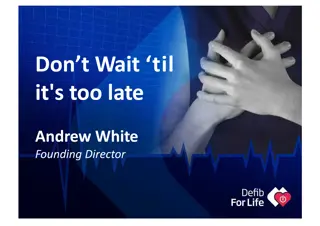Sudden Cardiac Arrest (SCA) and AEDs
Sudden Cardiac Arrest (SCA) is a life-threatening condition where the heart suddenly stops beating, leading to death if not treated promptly. It can occur without warning signs and affects both children and adults. Automated External Defibrillators (AEDs) play a crucial role in providing immediate treatment by delivering a shock to restore normal heart rhythm. Project ADAM is a nationwide initiative focused on preventing SCA and saving lives through education and access to AEDs.
Download Presentation

Please find below an Image/Link to download the presentation.
The content on the website is provided AS IS for your information and personal use only. It may not be sold, licensed, or shared on other websites without obtaining consent from the author.If you encounter any issues during the download, it is possible that the publisher has removed the file from their server.
You are allowed to download the files provided on this website for personal or commercial use, subject to the condition that they are used lawfully. All files are the property of their respective owners.
The content on the website is provided AS IS for your information and personal use only. It may not be sold, licensed, or shared on other websites without obtaining consent from the author.
E N D
Presentation Transcript
Project ADAM Project ADAM Project ADAM (Automated Defibrillators in Adam s Memory) began in 1999 in Wisconsin when Adam Lemel collapsed and died while playing basketball. Adam suffered a sudden cardiac arrest, in which an AED could have been used to save his life Adam s parents Patty and Joe Lemel worked with Children s Wisconsin to create Project ADAM Project ADAM is a nationwide initiative that has saved the lives of more than 200 children, adolescents, and adults who went into sudden cardiac arrest. We have over 45 affiliates in over 30 states and adding more locations each year
What is a Sudden Cardiac Arrest (SCA)? What is a Sudden Cardiac Arrest (SCA)? The American Heart Association defines a sudden cardiac arrest as the heart suddenly stops beating due to an irregular heart rhythm typically ventricular fibrillation (quivering of the heart without effective contraction) Can be caused by an underlying condition - cardiomyopathy or electrical abnormality More than half of these disorders in children and adolescents are genetic Other causes: being struck at in the chest, drugs, or unknown factors Without treatment, death can occur within minutes There are about 356,461 people a day who suffer from a sudden cardiac arrest each year in the U.S.
What is a Sudden Cardiac Arrest (SCA)? (cont.) What is a Sudden Cardiac Arrest (SCA)? (cont.) There are little to no warning signs with SCA. Often victims are the picture of health out for their daily run or in the middle of a ball game when they suddenly drop Signs of SCA: Not moving, unresponsive or unconscious Not breathing normally (i.e. may have irregular breathing, gasping, gurgling, or may not be breathing at all) Seizure or convulsion-like activity SCA can also occur to those who collapse shortly after being struck in the chest by a firm projectile/direct hit
What is an AED? What is an AED? AED= Automated External Defibrillator These devices are used to evaluate rhythm and deliver a shock if needed Devices should be stored in an unlocked case Most cases have an alarm when opened This alarm does NOT notify EMS, but can be an alert for the on-campus team to respond. The AED machine will tell you step-by-step what to do from the moment it is turned on Tells you how to apply the pads When not to touch the victim It will determine if the victim s heart is in need of a shock or not
Where are our AEDs? Where are our AEDs? Campus Map Highlight AEDs
What are all the parts of becoming Heart Safe? What are all the parts of becoming Heart Safe? Heart safe checklist Heart safe checklist Clear Communication- Ex. Code AED AED Placement 1 8 EMS have been notified of CPR-AED Program AED Signage 2 9 Plan shared with outside groups using facilities AED Maintenance Check 3 10 4 Accessory Kit Near or With AED 11 CPR- AED Training for Team Members 5 CPR-AED Site Coordinator 12 All Staff Know Location of AED Cardiac Emergency Response Team (5-10 Members) 6 13 All Staff awareness training Cardiac Emergency Response Drill 14 7 Written Cardiac Response Plan
Our Plan Our Plan Recognize Sudden Cardiac Arrest is occurring Call 9-1-1 (following protocol procedure) Begin CPR while directing someone to get the nearest AED Place AED & continue CPR until EMS arrives Implement Code ____ Protocol
Cardiac Emergency Response Drill Cardiac Emergency Response Drill Drills will happen one-two times a year Unannounced When you hear Code _____ Cardiac Emergency Response Team will follow their specific steps If you are not a team member keep students in the classrooms and stay out of the hallways If your next to a team member s class, supervise their students until an assistant/aide can cover If your class is in the area of a sudden cardiac arrest move them all away All staff should make every effort to protect the privacy and dignity of the victim, while also protecting their students from the trauma of such an incident
Questions? Questions?


